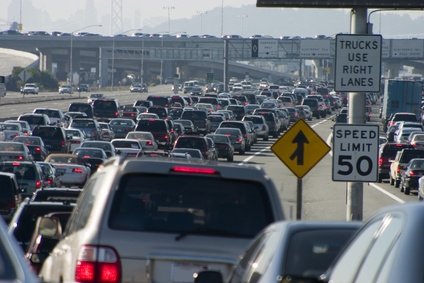
Merging into freeway traffic can be an intense and dangerous experience, yet modern transportation engineers have found a simple and effective way to alleviate this hazard. An auxiliary lane, the extra lane constructed between on and off ramps, allows drivers a safe way to merge into traffic while also preventing bottlenecks caused by drivers attempting to enter or exit the freeway.
An auxiliary lane is a lane that is added between interchanges. According to the Washington State Department of Transportation, the function of an auxiliary lane is to give drivers more room to speed up and slow down when getting on or off a freeway.
An auxiliary lane makes it easier for drivers to merge into freeway traffic. This is not only easier and safer on drivers but it also reduces ramp congestion.
According to the South Dakota Department of Transportation, auxiliary lanes should measure at least 9 feet wide for reconstruction and resurfacing projects. For new construction projects, they should by 10 to 12 feet wide.
The South Dakota Department of Transportation also reports that there are five factors that determine the length of an auxiliary lane: the approach taper, deceleration length, bay taper, storage length and departure taper.
An auxiliary lane is a significantly expensive construction project. The Santa Clara Valley Transportation Authority plans to construct auxiliary lanes on each direction along a 3.2-mile portion of U.S. 101 for an expected cost of $102 million.